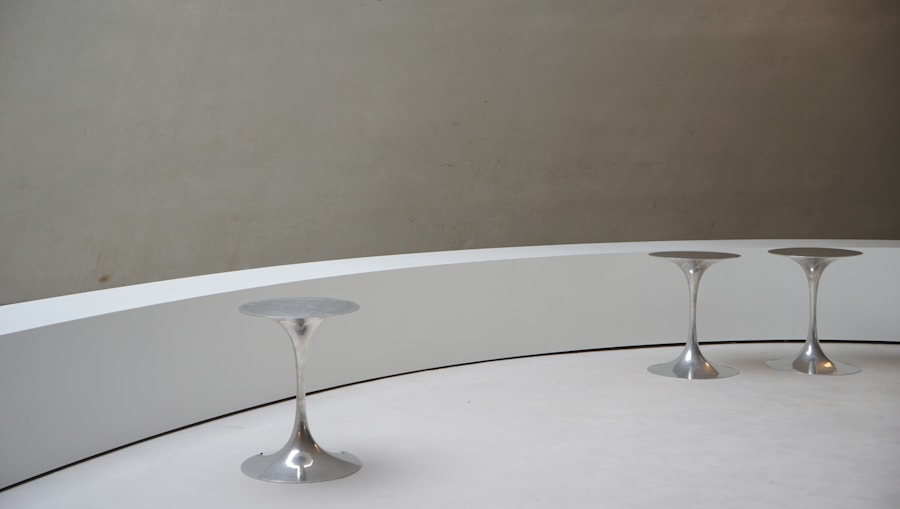In the contemporary workplace, the design and functionality of meeting spaces have evolved significantly, with modern meeting tables playing a pivotal role in enhancing productivity. These tables are not merely pieces of furniture; they serve as the central hub for collaboration, brainstorming, and decision-making. A well-designed meeting table can foster an environment that encourages open communication and creativity, which are essential for driving innovation and achieving organizational goals.
The layout and aesthetics of a meeting table can influence the dynamics of discussions, making it crucial for businesses to invest in modern designs that cater to their specific needs. Moreover, the importance of modern meeting tables extends beyond their physical presence. They symbolize a company’s commitment to creating an engaging and efficient workspace.
In an era where remote work and hybrid models are becoming the norm, the design of meeting tables can bridge the gap between in-person and virtual interactions. A thoughtfully designed table can facilitate seamless communication among team members, whether they are physically present or joining via video conferencing tools. This adaptability is vital for maintaining productivity levels and ensuring that all participants feel included and valued during discussions.
Key Takeaways
- Modern meeting tables play a crucial role in enhancing productivity and collaboration in the workplace.
- The design and functionality of modern meeting tables should prioritize comfort, flexibility, and aesthetics to create an inviting and productive environment.
- Incorporating technology such as power outlets, USB ports, and wireless charging capabilities into modern meeting tables can enhance connectivity and productivity during meetings.
- Ergonomic considerations, such as adjustable height and supportive seating, are essential for creating a comfortable and healthy meeting space.
- Collaborative features like whiteboard surfaces, integrated storage, and cable management systems can encourage creativity and teamwork during meetings.
Design and Functionality of Modern Meeting Tables
The design of modern meeting tables is characterized by a blend of aesthetics and functionality, tailored to meet the diverse needs of today’s workplaces. Contemporary designs often feature clean lines, minimalist aesthetics, and a variety of materials such as wood, metal, and glass. These elements not only enhance the visual appeal of the workspace but also contribute to a more inviting atmosphere that encourages collaboration.
For instance, a round table can promote equality among participants by eliminating hierarchical seating arrangements, while a long rectangular table may be more suitable for formal presentations or larger groups. Functionality is equally important in the design of modern meeting tables. Many contemporary tables come equipped with features that enhance usability, such as integrated power outlets, cable management systems, and adjustable heights.
These features allow teams to connect their devices easily and maintain a clutter-free workspace. Additionally, some tables are designed to be modular, enabling organizations to reconfigure their meeting spaces according to specific needs or group sizes. This flexibility is essential in dynamic work environments where team compositions frequently change.
Incorporating Technology into Modern Meeting Tables

As technology continues to advance at a rapid pace, modern meeting tables have evolved to incorporate various technological features that enhance collaboration and communication. One of the most significant advancements is the integration of smart technology into meeting tables. Many contemporary designs now include built-in screens or projectors that facilitate presentations and visual aids during discussions.
This integration allows for a more interactive experience, enabling participants to engage with content in real-time. Furthermore, modern meeting tables often come equipped with wireless charging stations and Bluetooth connectivity options. These features allow team members to charge their devices without the hassle of tangled cords while also connecting seamlessly to audio-visual equipment for presentations or video calls.
The incorporation of technology not only streamlines the meeting process but also ensures that all participants can contribute effectively, regardless of their location. As remote work becomes increasingly prevalent, these technological enhancements are essential for maintaining productivity and engagement during meetings.
Ergonomic Considerations for Modern Meeting Tables
Ergonomics plays a crucial role in the design of modern meeting tables, as it directly impacts the comfort and well-being of participants during meetings. A well-designed table should accommodate various body types and preferences, ensuring that all attendees can engage comfortably without experiencing strain or discomfort. Height-adjustable tables are becoming increasingly popular, allowing users to switch between sitting and standing positions throughout meetings.
This flexibility not only promotes better posture but also enhances focus and energy levels during discussions. In addition to height adjustability, the shape and size of modern meeting tables should also consider ergonomic principles. For example, tables with rounded edges can reduce the risk of injury while providing ample space for participants to move around comfortably.
Furthermore, the distance between participants should be carefully considered to facilitate easy communication without causing strain on the neck or back. By prioritizing ergonomic design in meeting tables, organizations can create a more inclusive environment that supports the health and productivity of all team members.
Collaborative Features of Modern Meeting Tables
Collaboration is at the heart of effective teamwork, and modern meeting tables are designed with features that enhance this essential aspect of work life. One notable feature is the inclusion of writable surfaces or whiteboard capabilities on table surfaces. This allows participants to jot down ideas, sketch diagrams, or brainstorm collectively during meetings without needing additional materials.
The ability to visualize thoughts in real-time fosters creativity and encourages active participation from all attendees. Another collaborative feature gaining popularity is the use of integrated technology that supports real-time collaboration tools. Many modern meeting tables now come equipped with software that allows participants to share documents, edit files simultaneously, and communicate through chat functions during meetings.
This integration not only streamlines workflows but also ensures that everyone is on the same page, regardless of their physical location. By incorporating these collaborative features into meeting tables, organizations can create an environment that nurtures teamwork and innovation.
Customization Options for Modern Meeting Tables

Reflecting Brand Identity and Workplace Culture
Businesses can choose from a variety of materials, colors, shapes, and sizes to create a table that aligns with their brand identity and workplace culture. For instance, a tech startup may opt for sleek glass surfaces with vibrant colors to reflect its innovative spirit, while a law firm might prefer traditional wooden finishes that convey professionalism and stability.
Functional Customization for Enhanced Productivity
Beyond aesthetic choices, customization also extends to functional aspects of meeting tables. Organizations can select features such as integrated power sources, cable management systems, or even built-in storage solutions based on their unique requirements. This level of personalization ensures that meeting tables not only fit seamlessly into the overall design of the workspace but also enhance productivity by catering to the specific needs of teams.
The Future of Meeting Table Design
As businesses continue to recognize the importance of creating tailored environments, customization options for modern meeting tables will remain a significant consideration.
Sustainability and Environmental Impact of Modern Meeting Tables
In recent years, sustainability has become a critical factor in furniture design, including modern meeting tables. As organizations strive to reduce their environmental footprint, many manufacturers are focusing on using eco-friendly materials and sustainable production processes. For example, tables made from reclaimed wood or recycled materials not only minimize waste but also contribute to a more sustainable future.
Additionally, manufacturers are increasingly adopting practices that reduce energy consumption during production and transportation. The environmental impact of modern meeting tables extends beyond their materials; it also encompasses their lifecycle. Durable designs that withstand wear and tear contribute to sustainability by reducing the need for frequent replacements.
Furthermore, many companies are now offering take-back programs or recycling options for old furniture, ensuring that it is disposed of responsibly rather than ending up in landfills. By prioritizing sustainability in their choices for modern meeting tables, organizations can demonstrate their commitment to environmental stewardship while creating a healthier workplace.
Tips for Choosing the Right Modern Meeting Table for Your Workspace
Selecting the right modern meeting table for your workspace involves careful consideration of various factors that align with your organization’s needs and culture. First and foremost, assess the size of your meeting space and determine how many participants will typically be present during meetings. This will help you choose an appropriately sized table that allows for comfortable seating without overcrowding the room.
Next, consider the functionality you require from your meeting table. If your team frequently engages in collaborative brainstorming sessions, look for tables with writable surfaces or integrated technology that supports real-time collaboration tools. Additionally, think about whether you need adjustable height options or modular designs that can be reconfigured based on different group sizes or meeting formats.
Aesthetics should also play a role in your decision-making process. Choose materials and colors that reflect your brand identity while creating an inviting atmosphere for meetings. Finally, don’t overlook ergonomic considerations; ensure that the table’s height and shape promote comfort for all participants.
By taking these factors into account when choosing a modern meeting table, organizations can create an effective workspace that enhances productivity while fostering collaboration among team members.
When it comes to creating a productive and comfortable office space, meeting tables play a crucial role. In addition to choosing the right table, it is also important to consider the ergonomics of the workspace. A related article on height-adjustable desks and ergonomics provides valuable insights into how to design an office that promotes employee well-being and productivity. To learn more about this topic, check out the article here.
FAQs
What are meeting tables for office?
Meeting tables for office are large tables designed for use in office meeting rooms or conference rooms. They are typically used for group discussions, presentations, and collaborative work.
What are the different types of meeting tables for office?
There are various types of meeting tables for office, including rectangular tables, round tables, oval tables, boat-shaped tables, and modular tables. Each type has its own advantages and is suitable for different types of meetings and office spaces.
What materials are meeting tables for office made of?
Meeting tables for office are commonly made of materials such as wood, metal, glass, and laminate. The choice of material depends on factors such as the desired aesthetic, durability, and budget.
What are the important factors to consider when choosing meeting tables for office?
When choosing meeting tables for office, it is important to consider factors such as the size of the room, the number of people the table needs to accommodate, the style and design of the table, and the overall functionality and flexibility of the table.
How can meeting tables for office contribute to a productive work environment?
Meeting tables for office can contribute to a productive work environment by providing a dedicated space for collaboration, brainstorming, and decision-making. They can also help to facilitate communication and teamwork among employees.


